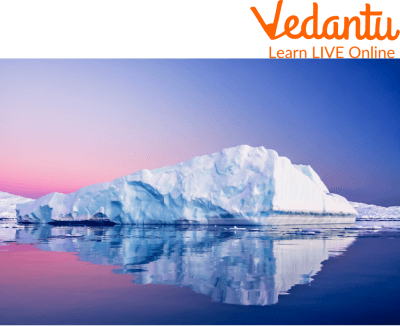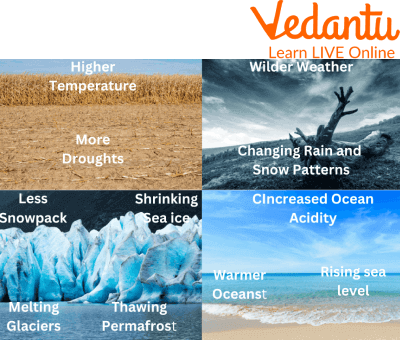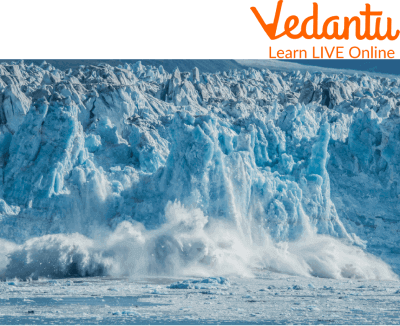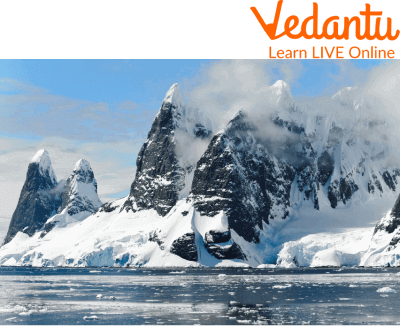




Overview of Facts About Glaciers
Have you ever seen a few boulders of ice in the water? Have you ever imagined how these ice mountains were formed? Or ever wondered how big these are under the water? These big boulders of ice are called glaciers. These usually are seen in places where the temperature is below zero degree celsius or at places where there is always cold or extremely cold weather; these are the places where you will find these glaciers. In this article, we will look at various glacier information and also learn fun facts about glaciers. So let's start learning.

Glacier
Common Glacier Information
A glacier is a huge region of solid ice which is continuously frozen. Glaciers often move slowly across the landscape. Glaciers blanketed significant portions of the planet a few thousand years ago. Glaciers once blanketed approximately 30% of the Surface of the planet. Fewer glaciers existed in the past compared to the present.
Presently, glaciers may be found all over the planet. Greenland and Antarctica are both mostly topped by huge layers of glacier ice. Minor glaciers can be found in the European Alps, the Mountain Range of North America, and even in high regions close to the equator.
The glaciers are created when snow is compressed with high pressure until it turns into ice. These ice particles or glaciers build up over time at places where the temperature does not rise high enough to defrost the winter weather conditions entirely. Due to this build-up of snow particles at a particular place, the weight of the particles exerts a lot of pressure on the snow itself eventually turning the snow into what we call a glacier.
Facts About Glaciers Melting
The melting of glaciers can have a huge impact on our planet and also on our lives. Below listed are some fun facts about glacier melting that all of us should know.
The most astonishing fact about glaciers is that the glaciers over the entire globe are the storehouse of about 3/4th of all the freshwater that is present on the earth.
Presently, it is believed that if global warming continues to raise the temperature of the world this will eventually lead to the melting of glaciers. This in turn will raise the sea level and will lead to flooding of various cities of the world.
Presently, the sea level is rising about 2 millimetres annually and scientists believe that this is because of the melting of glaciers.

Impacts of Glacier Melting
Types of Glaciers
According to scientists, various types of glaciers have been found all over the world and a few of those main types are listed below.
Calving Glaciers - These are the glaciers that break off from the main huge glaciers and drift into some water bodies. These glaciers are also called tidewater glaciers because they can cause tide-like movements in waters.

Calving Glacier
Hanging Glaciers - These are the glaciers that hang off the mountain sides above the glacial valley but never can make it to the valley when the glacier slits these are known as hanging glaciers.
Ice Cap Glaciers - These types of glaciers are formed when there is no land left uncovered from the ice, not even the peaks of the high mountain.
Polar Glacier- This type of glacier is found in places where the temperature is always below the freezing point.

Polar Glacier
Interesting Facts About Glaciers
Greenland is mostly blanketed by a massive ice cap glacier that, in some places, is nearly two kilometres broad.
A glacier that is receding isn't currently moving backwards; rather, it is dissolving more quickly compared to making new ice.
The Lambert Glacier of Antarctica, which is around 100 km wide, 400 km long, and 2.5km deep, is indeed the biggest glacier on the planet.
Glacial movements are similar to river movements.
Summary
To conclude all the learnings from this article, we can say glaciers can be found anywhere on the earth where the temperature is below a certain range. They can be found anywhere instead of just the North Pole or South Pole. In this article, we learned that glacier melting can cause major problems to our climate from the increment in temperature to causing floods. Therefore, we need to keep a check on our activities that can be potentially harmful to our environment and the glaciers. With this, we would like to end this topic and hope that we were clear enough to be understood easily.
FAQs on Facts About Glaciers
1. What is the colour of glaciers?
The colour of glaciers is usually blue. Scientifically they absorb the red part of the light and emit the bluish colour that is perceived by our eyes.
2. How old can a glacier be?
A glacier can be about thousands of years old. Some of the glaciers that are discovered on the surface of the earth are about 1,00,000 years old.
3. Is glacial water safe to drink?
Yes, it is safe to drink glacier water because a scientific lead has been proven that glacier water is the freshest water that could be found on earth.









